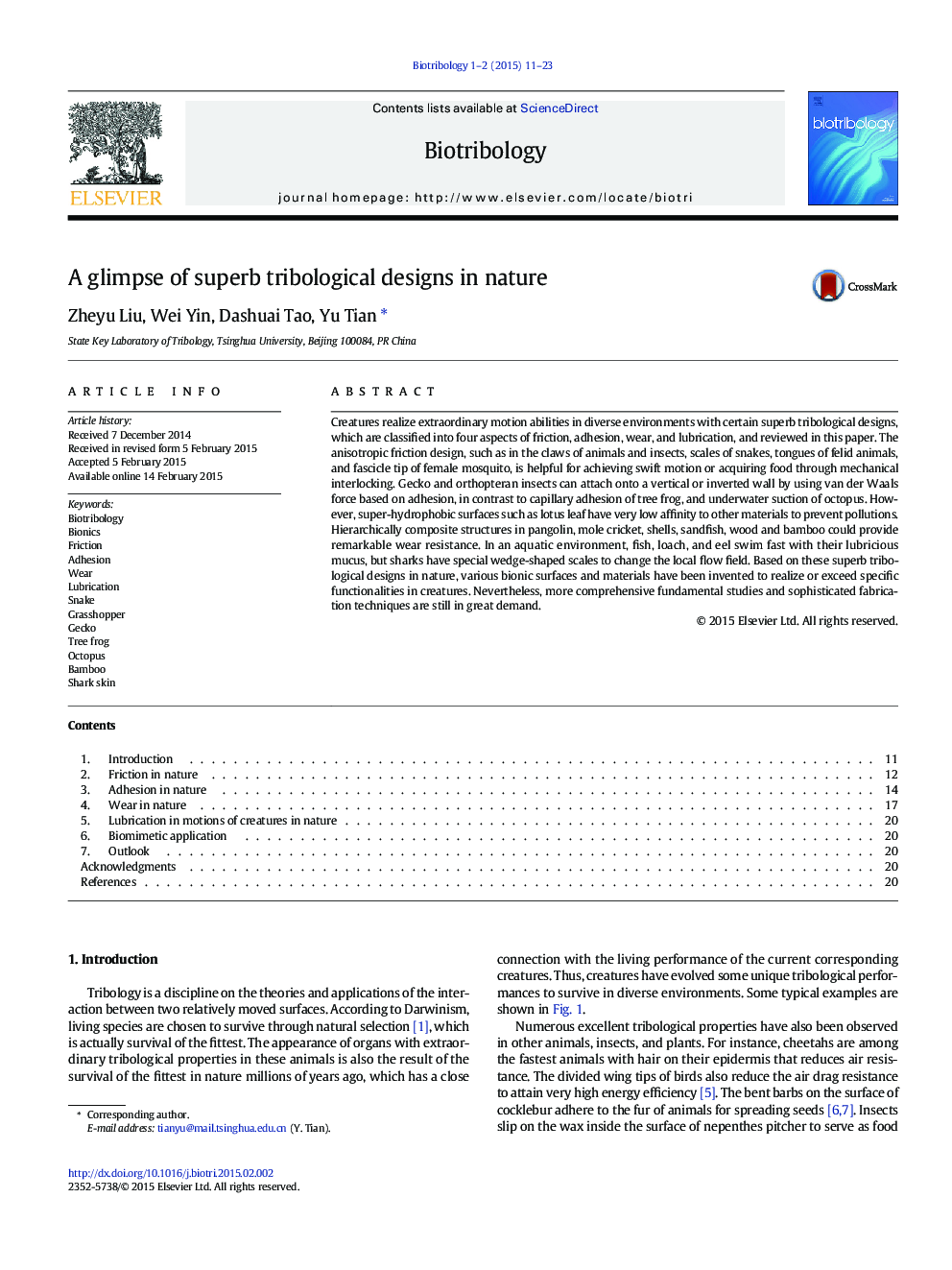| Article ID | Journal | Published Year | Pages | File Type |
|---|---|---|---|---|
| 756900 | Biotribology | 2015 | 13 Pages |
Creatures realize extraordinary motion abilities in diverse environments with certain superb tribological designs, which are classified into four aspects of friction, adhesion, wear, and lubrication, and reviewed in this paper. The anisotropic friction design, such as in the claws of animals and insects, scales of snakes, tongues of felid animals, and fascicle tip of female mosquito, is helpful for achieving swift motion or acquiring food through mechanical interlocking. Gecko and orthopteran insects can attach onto a vertical or inverted wall by using van der Waals force based on adhesion, in contrast to capillary adhesion of tree frog, and underwater suction of octopus. However, super-hydrophobic surfaces such as lotus leaf have very low affinity to other materials to prevent pollutions. Hierarchically composite structures in pangolin, mole cricket, shells, sandfish, wood and bamboo could provide remarkable wear resistance. In an aquatic environment, fish, loach, and eel swim fast with their lubricious mucus, but sharks have special wedge-shaped scales to change the local flow field. Based on these superb tribological designs in nature, various bionic surfaces and materials have been invented to realize or exceed specific functionalities in creatures. Nevertheless, more comprehensive fundamental studies and sophisticated fabrication techniques are still in great demand.
